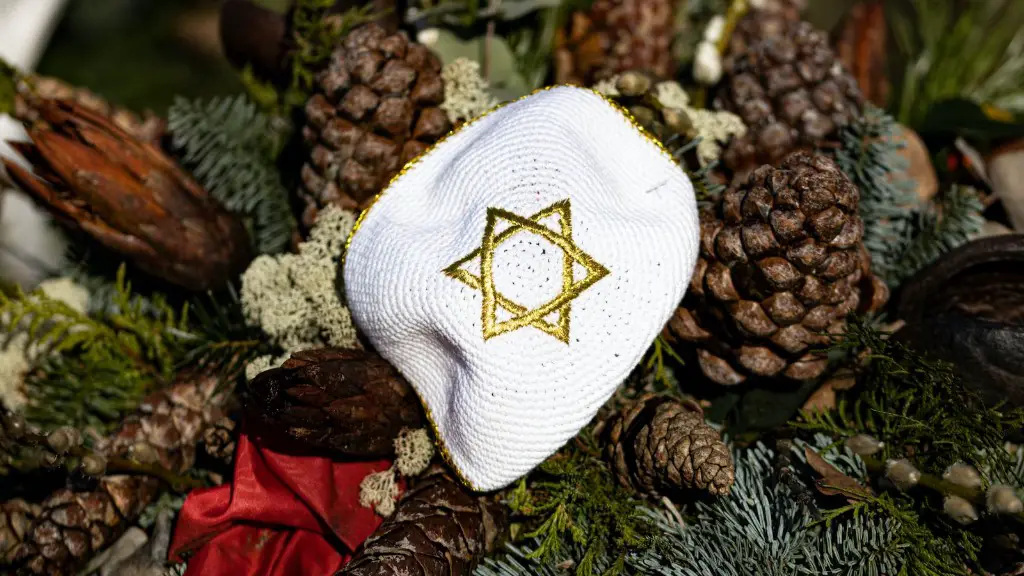The similarities between Catholicism and Judaism are both vast and profound in scope. Catholicism and Judaism share certain beliefs, scriptures, and traditions that have colored the religious and social atmosphere of both faiths for centuries. Both faiths view God as the source of all creation and seek to bring believers closer to His presence. Additionally, religious studies and scholarship note that both religions place strong emphasis on ethical living, the importance of the Torah, and the Ten Commandments.
Catholicism and Judaism both regard the Ten Commandments as laws handed down by God. The Catholic Church holds that they are the basis of moral life, with each commandment holding the key to the proper relationship between God, man, neighbor, and nature. To this end, both religions follow a series of values and principles derived from the Ten Commandments such as justice, mercy, fidelity, fidelity to the community, reverence for sacred things, and respect for others.
Both Catholicism and Judaism recognize the importance of Torah, the writings of the Old Testament, but each faith interprets its guidelines differently. Catholicism follows the rules and norms of the Gospel, which are laden in the teachings of Jesus. Judaism, however, follows the rules of the Talmud and rabbinical teachings, which offer unique lenses from which to interpret and apply Torah guidelines.
Furthermore, ritual observances among Catholics and Jews vary slightly. Catholic ritual is an outward act of faith and devotion, such as daily prayer and devotional practices, in addition to sacraments observed by nuns and priests. For Jews, ritual observance involves strict adherence to the laws set forth in the Talmud and other scripture. They may observe fasting, the Sabbath, and other holy days. Intricate dietary laws differentiate healthy and permissible foods, while laws regarding marriage and the structure of a Jewish home carry similar standards of holiness.
Finally, both religions emphasize forgiveness in the face of wrongdoing. Catholic doctrine recognizes that individuals can receive forgiveness from God if they confess their sins, show contrition, and strive to lead a more just life. Jews practice a similar process, known as teshuvah (repentance), and believe that through prayer and good works, one can gain forgiveness from God.
Differing Doctrines
Despite the significant similarities between Judaism and Catholicism, the two faiths differ considerably in terms of their doctrines and approaches to religious observance. Catholicism is built on the foundations of long-held Christian beliefs regarding the life and teachings of Jesus, while Judaism focuses on the teachings of the Torah and the laws of the Talmud.
In addition, Catholics practice a list of seven sacraments meant to bring spiritual salvation, such as Baptism and Confirmation, while Jews generally do not recognize these religious rituals. Catholics also observe the Christian calendar with special holidays, feast days, and other observances, while Jews follow a calendar established by the Talmud and rabbinical literature.
Furthermore, Jews do not hold the same views of Jesus, nor do they believe in the divinity of Jesus. Catholicism professes belief in Jesus as both the Son of God and the Messiah, doctrines that define the faith and separate Catholicism from Judaism, as well as from other branches of Christianity.
Contrasts in Ritual Practices
Ritual observance among Catholics includes the use of liturgy, liturgical dance, and musical elements, as well as devotion to the crucifix and the taking of communion. Catholic ritual observance is highly structured and guided by the rituals set forth in the Catholic Church. In addition, the observance of certain holidays and feast days is an important part of Catholic ritual.
In contrast, Jews practice rituals that are generally more spontaneous and less structured. Rituals often involve singing, dancing, prayer, and study of the Torah. Jewish ritual observance is marked by the daily wearing of prayer shawls and prayer beads, the blowing of the shofar during the High Holidays, and special observances of times of fasting and mourning.
Nomination of Saints and Angels
Catholics and Jews differ significantly in the patronage of particular spiritual entities. Catholicism recommends the patronage of certain saints, who are believed to intercede with God on behalf of the faithful. In contrast, Jews generally do not recognize saints in this way and instead view the idea of patron saints as idolatry. Additionally, Catholics venerate angels, while Jews do not recognize angelic beings as such.
Approach to Practicing Faith
The prevailing attitudes of Catholics and Jews also differ significantly. Catholic evangelization and missionary work is extensive, meant to bring people closer to Christ regardless of their religious background. In contrast, the practice of Judaism strongly discourages attempts to proselytize or convert non-Jews to the faith. Conversion is allowed, but it is typically limited to a select few circumstances and is by no means encouraged.
Contribution to Society
Historically, Judaism and Christianity have each made valuable and lasting contributions to society in both the immediate and distant past. Judaism is often credited for its contributions to theoretical and ethical thought, linguistics, and art. Catholicism’s contributions to art, music, philosophical thought, and social values can be seen in the great humanistic works of renaissance artists, poets, and writers, as well as the complex legal systems and political structures woven together by bishops and kings over the centuries.
Additionally, both Judaism and Catholicism have left an indelible mark on the development of social values and religious practices in today’s world. The powerful influence of both faiths within the modern experience is undeniable, and continues to shape countless aspects of personal, social, and religious life.
Legal Context
The historical legal landscape between Judaism and Catholicism has also been complex. In the Middle Ages, the two faiths often clashed over the interpretation of laws, sometimes leading to ruinous pogroms and forced conversions. However, those days are long past and both faiths today enjoy a much more symbiotic relationship, holding their doctrines in highest regard without infringing on another’s right to religious freedom.
In recent decades, the two faiths have sought rapprochement, working together to facilitate shared goals, foster dialogue, and help create a world where freedom of religion is protected and all believers can peacefully co-exist. This spirit of reconciliation and understanding serves as a model of harmony in an age of multifarious religious practices and denominations.
Faith-Based Education
Education is an important aspect of understanding and appreciating the relationship between Judaism and Catholicism. Jewish and Catholic scholars have worked together to increase understanding between the two central religious traditions. Additionally, priests, rabbis, and other religious educators have offered religious instruction to those of both faiths, providing a bridge to understanding and respect.
Today, some universities, seminaries, and other faith-based institutions offer dual programs in both Catholicism and Judaism. These educational opportunities allow students to explore both traditions side by side and come to a more nuanced understanding of the similarities and differences between them.
Conclusion
The connections between Judaism and Catholicism are far reaching, from differing ritual practices to shared ethical values. Understanding and appreciating the similarities between the two faiths is essential for creating an atmosphere of mutual understanding and respect. To this end, clergy, scholars, and educators are working together to bridge the gap in knowledge and appreciation between two important religious traditions.

